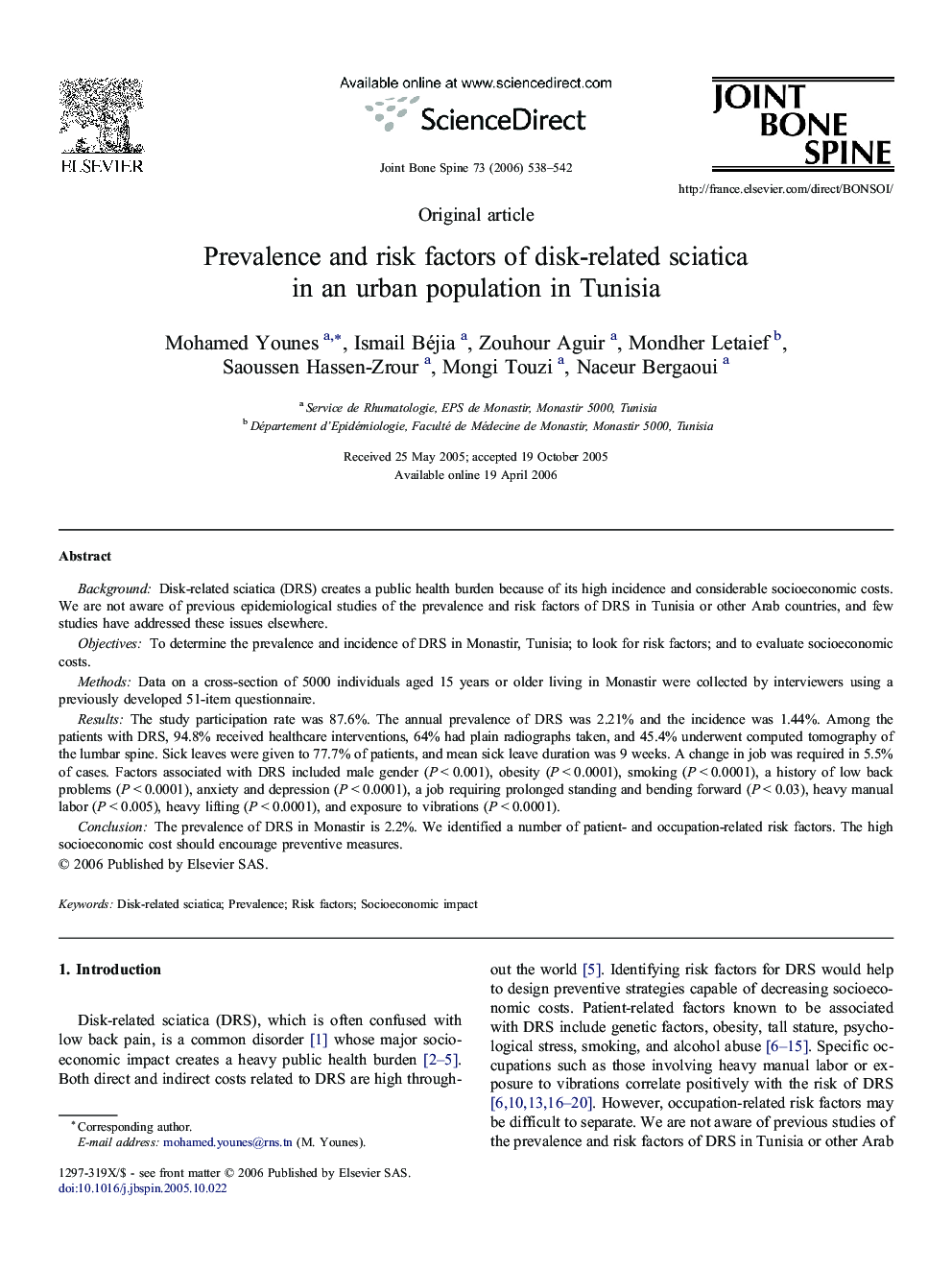| Article ID | Journal | Published Year | Pages | File Type |
|---|---|---|---|---|
| 3367166 | Joint Bone Spine | 2006 | 5 Pages |
BackgroundDisk-related sciatica (DRS) creates a public health burden because of its high incidence and considerable socioeconomic costs. We are not aware of previous epidemiological studies of the prevalence and risk factors of DRS in Tunisia or other Arab countries, and few studies have addressed these issues elsewhere.ObjectivesTo determine the prevalence and incidence of DRS in Monastir, Tunisia; to look for risk factors; and to evaluate socioeconomic costs.MethodsData on a cross-section of 5000 individuals aged 15 years or older living in Monastir were collected by interviewers using a previously developed 51-item questionnaire.ResultsThe study participation rate was 87.6%. The annual prevalence of DRS was 2.21% and the incidence was 1.44%. Among the patients with DRS, 94.8% received healthcare interventions, 64% had plain radiographs taken, and 45.4% underwent computed tomography of the lumbar spine. Sick leaves were given to 77.7% of patients, and mean sick leave duration was 9 weeks. A change in job was required in 5.5% of cases. Factors associated with DRS included male gender (P < 0.001), obesity (P < 0.0001), smoking (P < 0.0001), a history of low back problems (P < 0.0001), anxiety and depression (P < 0.0001), a job requiring prolonged standing and bending forward (P < 0.03), heavy manual labor (P < 0.005), heavy lifting (P < 0.0001), and exposure to vibrations (P < 0.0001).ConclusionThe prevalence of DRS in Monastir is 2.2%. We identified a number of patient- and occupation-related risk factors. The high socioeconomic cost should encourage preventive measures.
